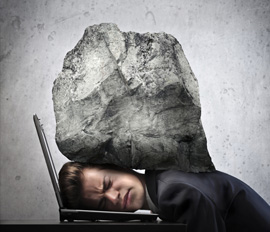Temporal Mandibular Dysfunction
A condition where the person clenches or grinds their teeth, usually while in deep sleep (REM sleep) and usually is unaware they are doing this. Grinding can wear the teeth so usually a dentist will pick up on this but if it is clenching that occurs there usually is no trace of evidence. An intuitive Myotherapist will be able to pick this up with a few simple tests and it can indicate many underlying musculo-skeletal issues.
The causes and symptoms of this problem are varied and numerous.
Stress is a huge cause of this condition. With the mandible being a very emotional part of the human body and Psyche we are very expressive and emotive to our psychological state and it is expressed through the mandible and when in REM sleep, stressed out mind takes over in the night and clenching and grinding can take place. Studies have shown that the force in which some clench or grind is up to 6 times harder than if conscious, that is teeth breaking facts.
Incorrect Occlusion can be a factor, occlusion is how teeth close or fit together, if a door is not fitted correctly into the door jam, the hinges will be under stress, the same applies anatomically.
Muscular imbalance, which is the most probable and prominent. The closing muscles of the jaw generally are stronger than the openers, when the closing musculature ,temporalis, masseter, and pterygoids become contracted and ‘overtight’ it will result in a jaw that is out of balance, this puts pressure on the temporal mandibular joint directly affecting the joint but it also has a dramatic effect on other structures of the body. The cervical (neck) vertebrae act as an anchor to support the pendulum which is the jaw, the neck can become subluxated or locked, tight and inflamed, upper back pain, headaches, facial pain, jaw pain, light headedness and generally hard to focus.
An experienced Myotherapist will be able to identify this condition immediately and implement a non invasive treatment plan. Muscular release techniques on all closing mechanisms and structures and active release exercises to stretch and build the opening structures to restore balance to the actual joints. After all the only two joints in your skull are the jaw joints.
Identifying the triggers for an overactive jaw ie stress, muscle imbalance or occlusal issues is paramount and needs to be discussed and if required be referred to the appropriate health care practitioners that we are aligned with, example an occlusal night splint may need to be, fitted by a dentist who has expertise in this particular area.

